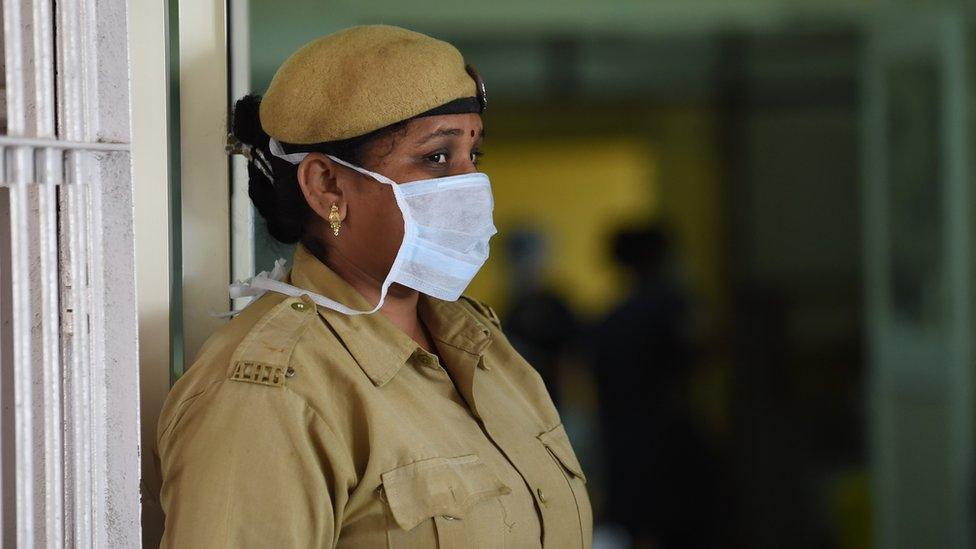India swine flu death toll rises above 1,000 this year
- Published

2016 saw a dip in recorded deaths and affected cases, but this year they have risen.
India appears to be in the grip of a swine flu outbreak with 1,094 recorded deaths over the past eight months, said an official report on Wednesday.
The last three weeks have seen the highest number of fatalities, at 342.
A total of 22,186 cases have been reported across the country.
The number of deaths this year is four times more than fatalities recorded over the equivalent period in 2016, which itself saw a dip in occurrences of the disease.
The western state of Maharashtra is the worst affected, where the death toll stands at 437, according to data revealed by the Union Health Ministry. Neighbouring Gujarat follows closely with 297 deaths, reported news agency PTI.
India experienced a severe swine flu wave two years ago, when health officials scrambled to contain an outbreak which killed more than 1,900 people, external. While 2016 saw a dip in recorded deaths (265) and affected cases (1,786), the numbers for this year indicate a resurgence of the disease.
The country saw its most crippling outbreak in the pandemic years of 2009-2010, when the virus affected around 50,000 people and claimed the lives of more than 2,700 across the country.
Dr Sanjay Gururaj, medical director at Shanthi Hospital, a private clinic, told the BBC that it was not mandatory for a private hospital to report its numbers to the government's database. "The numbers in the official report are possibly just the tip of the iceberg," he said.

What is swine flu?
A respiratory disease caused by a strain of the influenza type A virus known as H1N1
Originated in pigs, but is now a human disease spread by coughing and sneezing
Symptoms similar to those produced by standard, seasonal flu - fever, cough, sore throat, body aches and chills
Vulnerable groups include pregnant women, children under five, the over-65s and those with serious medical conditions
The virus first appeared in Mexico in 2009 and rapidly spread around the world.
